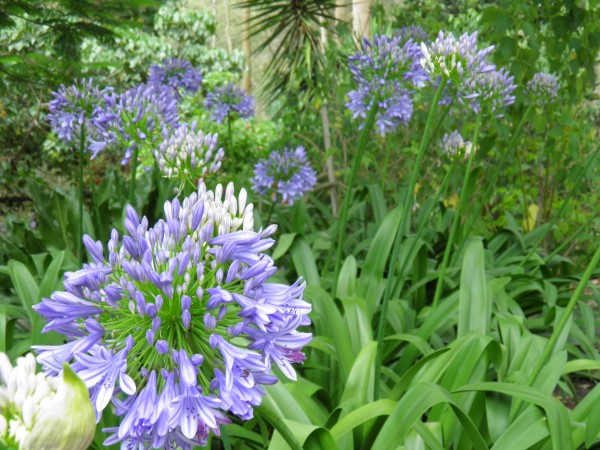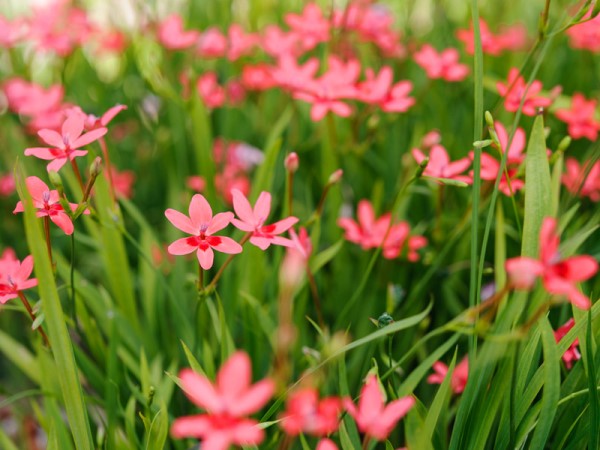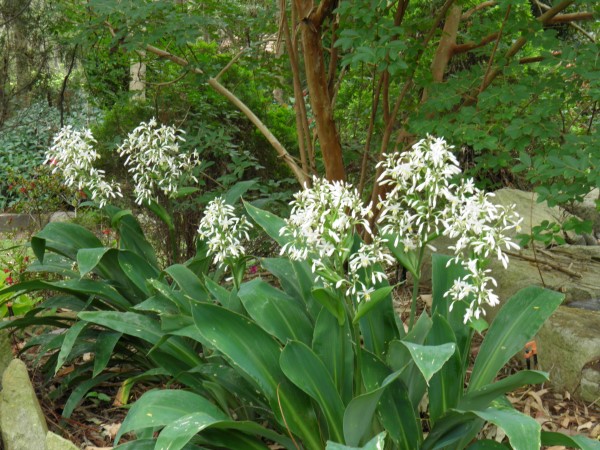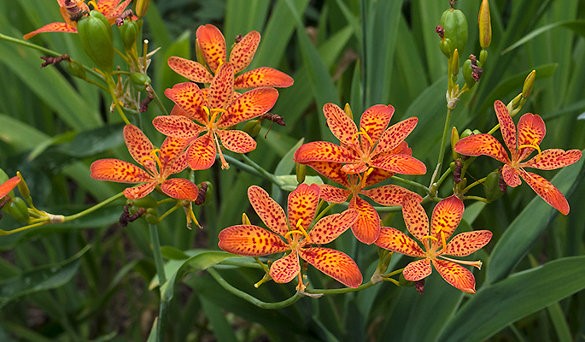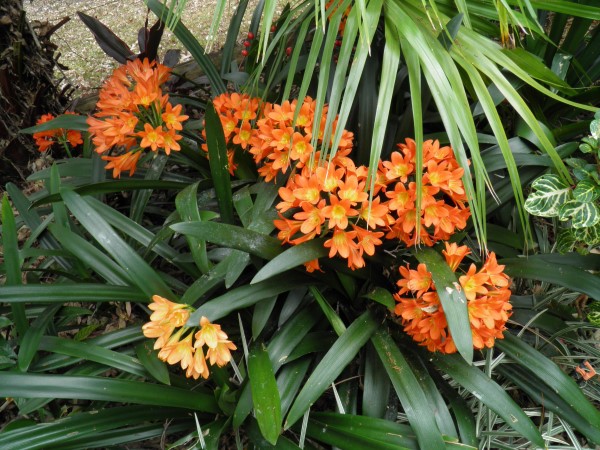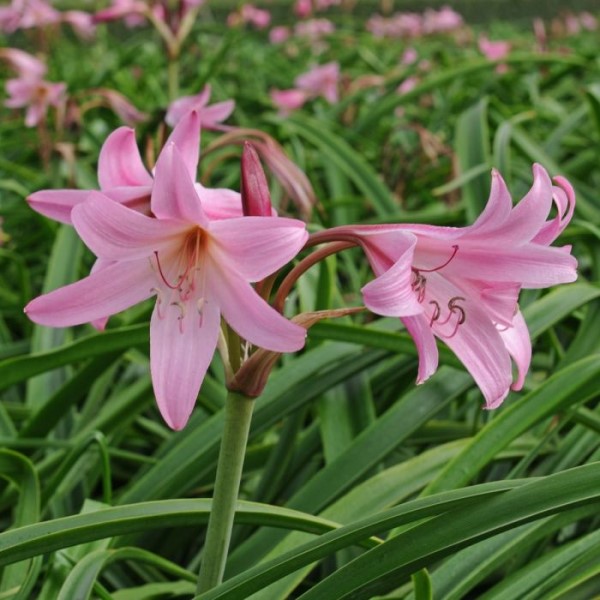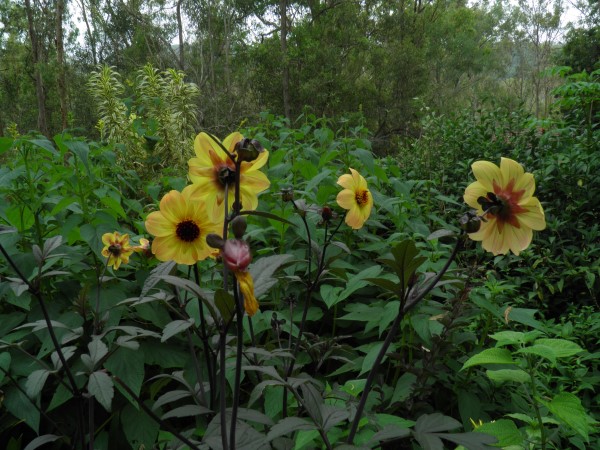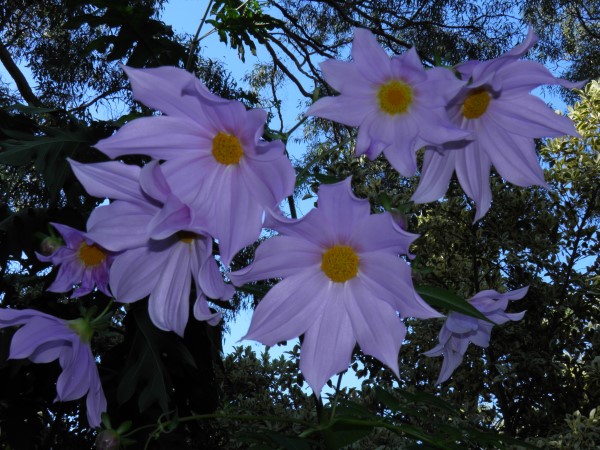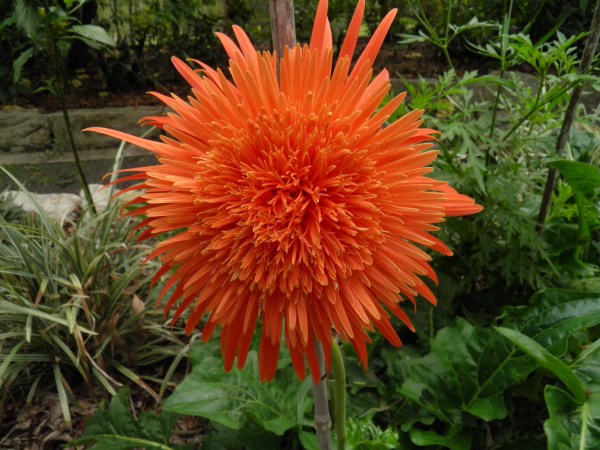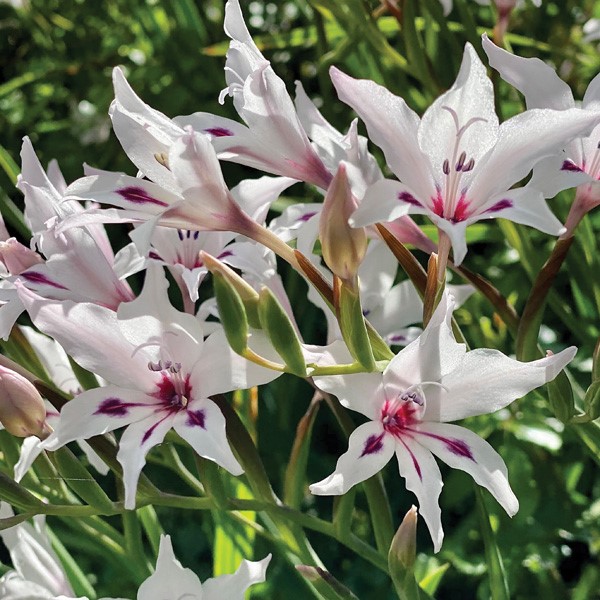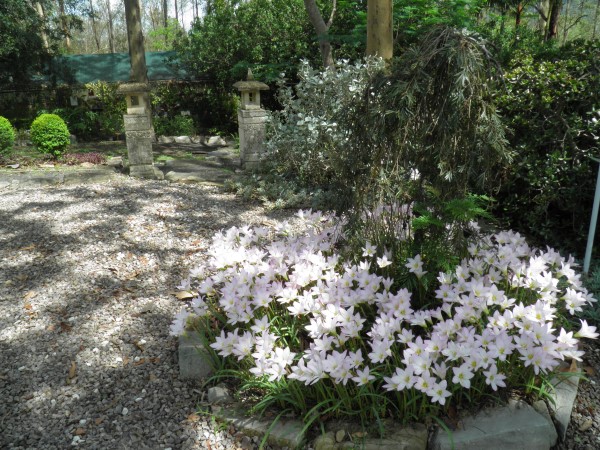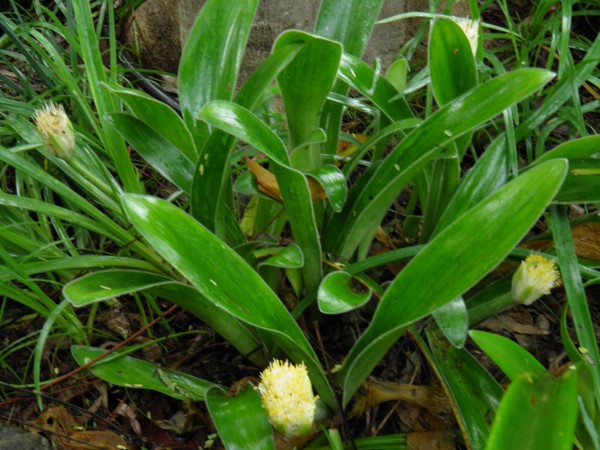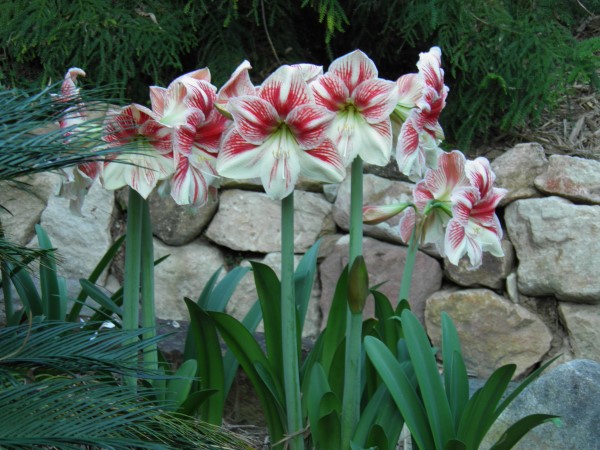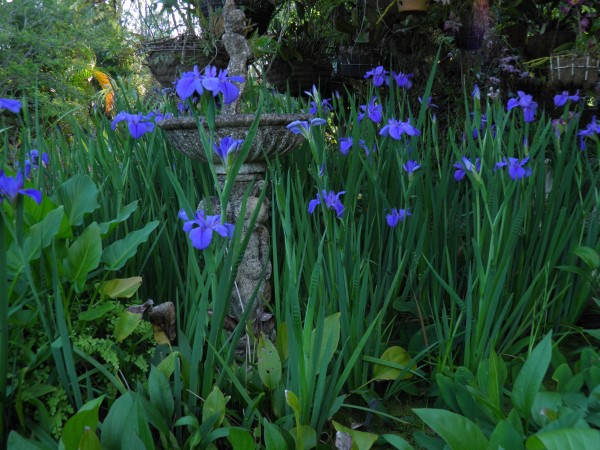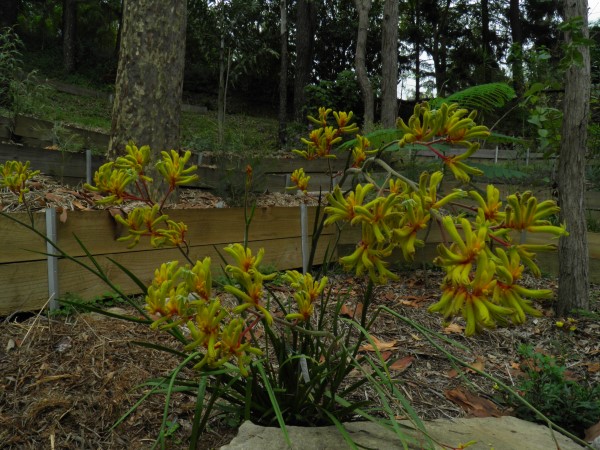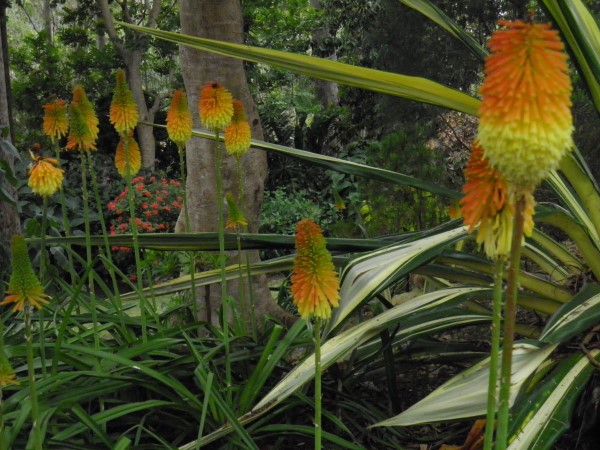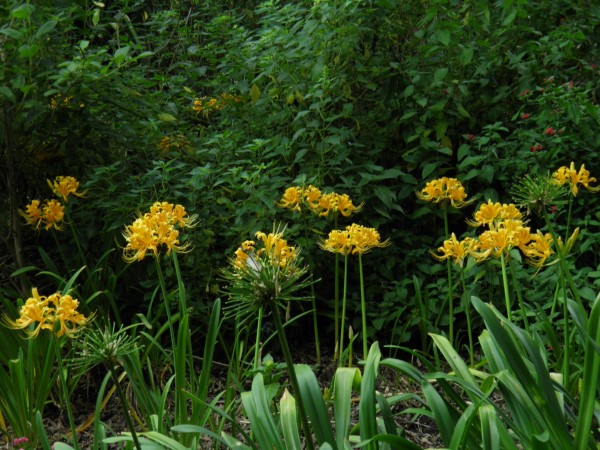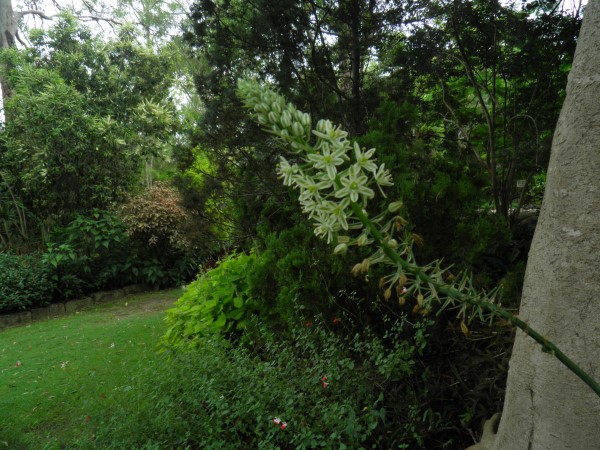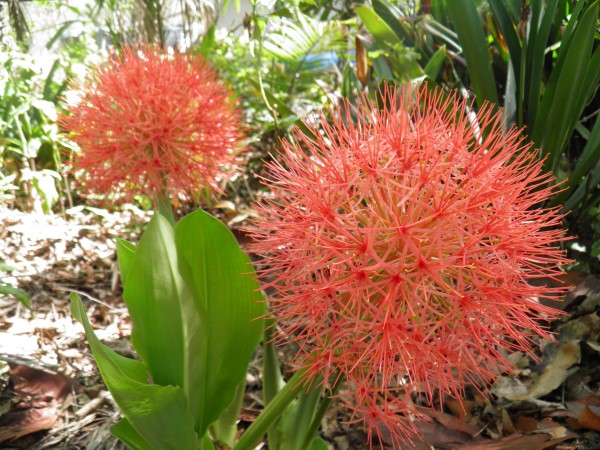

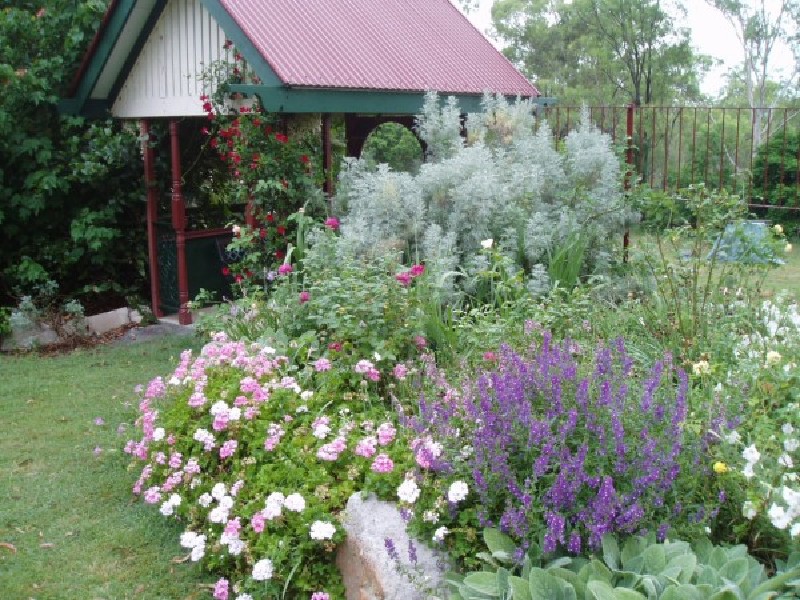
BULBS, CORMS and RHIZOMES
Bulb Growing Hints
1.Bulbs, Rhizomes, Corms and Tubers are:
a.Are underground food storage structures
b.Food reserves enable the plant to survive adverse conditions
c.Cycle through vegetative and reproductive growth stages
d.Small bulbs can develop or propagate from a large bulb
2.Planting
a.Soil must be well drained or else the bulbs will rot
b.Raising the garden bed will help drainage
c.Any good fertile soil, add well rotted manure or compost to improve
d.PH neutral
e.Most of the South African bulbs grow naturally in sand
f.The depth of the bulb is important. Some bulbs like their necks above ground level
g.Consider light, some prefer shade and some full sun
h.Mulch is good for most bulbs but there are exceptions, particularly the bulbs that like their necks above ground level often do not like mulch.
3.Maintenance of Bulbs
a.I donít cut the flower stems off, I let them die back on the plant
b.Bulbs will form a clump after a few years and when the clump gets too big, flowering will diminish
c.This is the time to lift, separate and replant
d.Do this when they are dormant
e.Use a spade to dig around the perimeter of the clump and then a fork to lift
f.Shake off the excess soil and separate by pulling apart.
g.You can replant in smaller clumps or single bulbs
h.Replenish the soil again with compost or well rotted manure prior to planting
1.Propagating Bulbs
a.Flowers will produce seed and this can be sown to grow more plants. This is a longer process to flowering.
b.Bulbs can be divided by digging up, separating and re planting
c.A rhizome or tuber can be cut into sections. Dry the cut rhizome or tuber in a shady spot for a day or two before planting.
d.Make sure that the piece of rhizome or tuber has some roots and buds or leaves
e.Plant to the same depth
2.Problems:
a.Amaryllis lily borer
b.A lot lose their leaves so remember where you plant them
c. some need support as they are tall and floppy
d.Many come from Africa where they grow in sand which is free draining and do not like mulch around their base
a.Are underground food storage structures
b.Food reserves enable the plant to survive adverse conditions
c.Cycle through vegetative and reproductive growth stages
d.Small bulbs can develop or propagate from a large bulb
2.Planting
a.Soil must be well drained or else the bulbs will rot
b.Raising the garden bed will help drainage
c.Any good fertile soil, add well rotted manure or compost to improve
d.PH neutral
e.Most of the South African bulbs grow naturally in sand
f.The depth of the bulb is important. Some bulbs like their necks above ground level
g.Consider light, some prefer shade and some full sun
h.Mulch is good for most bulbs but there are exceptions, particularly the bulbs that like their necks above ground level often do not like mulch.
3.Maintenance of Bulbs
a.I donít cut the flower stems off, I let them die back on the plant
b.Bulbs will form a clump after a few years and when the clump gets too big, flowering will diminish
c.This is the time to lift, separate and replant
d.Do this when they are dormant
e.Use a spade to dig around the perimeter of the clump and then a fork to lift
f.Shake off the excess soil and separate by pulling apart.
g.You can replant in smaller clumps or single bulbs
h.Replenish the soil again with compost or well rotted manure prior to planting
1.Propagating Bulbs
a.Flowers will produce seed and this can be sown to grow more plants. This is a longer process to flowering.
b.Bulbs can be divided by digging up, separating and re planting
c.A rhizome or tuber can be cut into sections. Dry the cut rhizome or tuber in a shady spot for a day or two before planting.
d.Make sure that the piece of rhizome or tuber has some roots and buds or leaves
e.Plant to the same depth
2.Problems:
a.Amaryllis lily borer
b.A lot lose their leaves so remember where you plant them
c. some need support as they are tall and floppy
d.Many come from Africa where they grow in sand which is free draining and do not like mulch around their base
| Common Name | Botanical Name |
|
Nodding Violet Agapanthus Lime, metal Snake plant Kangaroo Paw Freesia syn Lapeirousia Renga Renga lily Leopard Lily Native Leek Angel Wings Chasmanthe Kaffir Lily Nodding clivea African lily Dahlia Tree Dahlia Dietes Wedding Gladioli Gladioli orange Storm Lily White Paintbrush Day lily Spring Hippeastrum Autumn Hippeastrum Bog Iris Red Hot Pokers Lousiana Iris Lycoris Walking Iris Marvel of Peru Pregnant onion Purple Oxalis Cardwell Lily Orange Hippeastrum Paint brush lily Calla Lily Autumn Crocus |
Achimenes Agapanthus praecox Alocasia Amorphophallus bulbifer Anigozanthos Anomatheca laxa Arthropodium cirrhatum Belamcanda chinensis Bulbine vagans Caladium Chasmanthe Clivia miniata Clivia nobilis Crinum moorei Crinum powellii Dahlia hybrids Dahlia Imperialis Dietes bicolor Gerbera Gladioli blushing bride Gladioli dalenii Habranthus Haemanthus albiflos Hemerocallis hybrids Hippeastrum Hippeastrum reticulatum Iris tectorum Iris versicolour Kniphofia Lousiana iris Lycoris Neomarica gracilis Mirabilis jalapa Ornithogallum Oxalis triangularis Proiphys amboinensis Rhodophiala chilense Scadoxus multiflorus Zantedeschia aethopica Zephranthes candida |
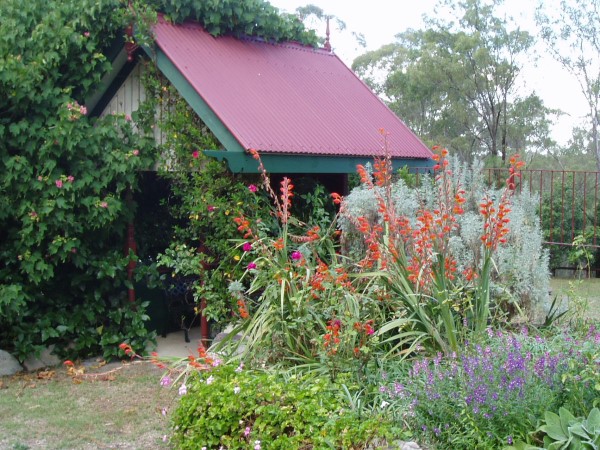
Gladioli delanii is an autumn flower and like so many Afican bulbs, dislikes mulch, as does many South African bulbs
Let nature be your guide






















